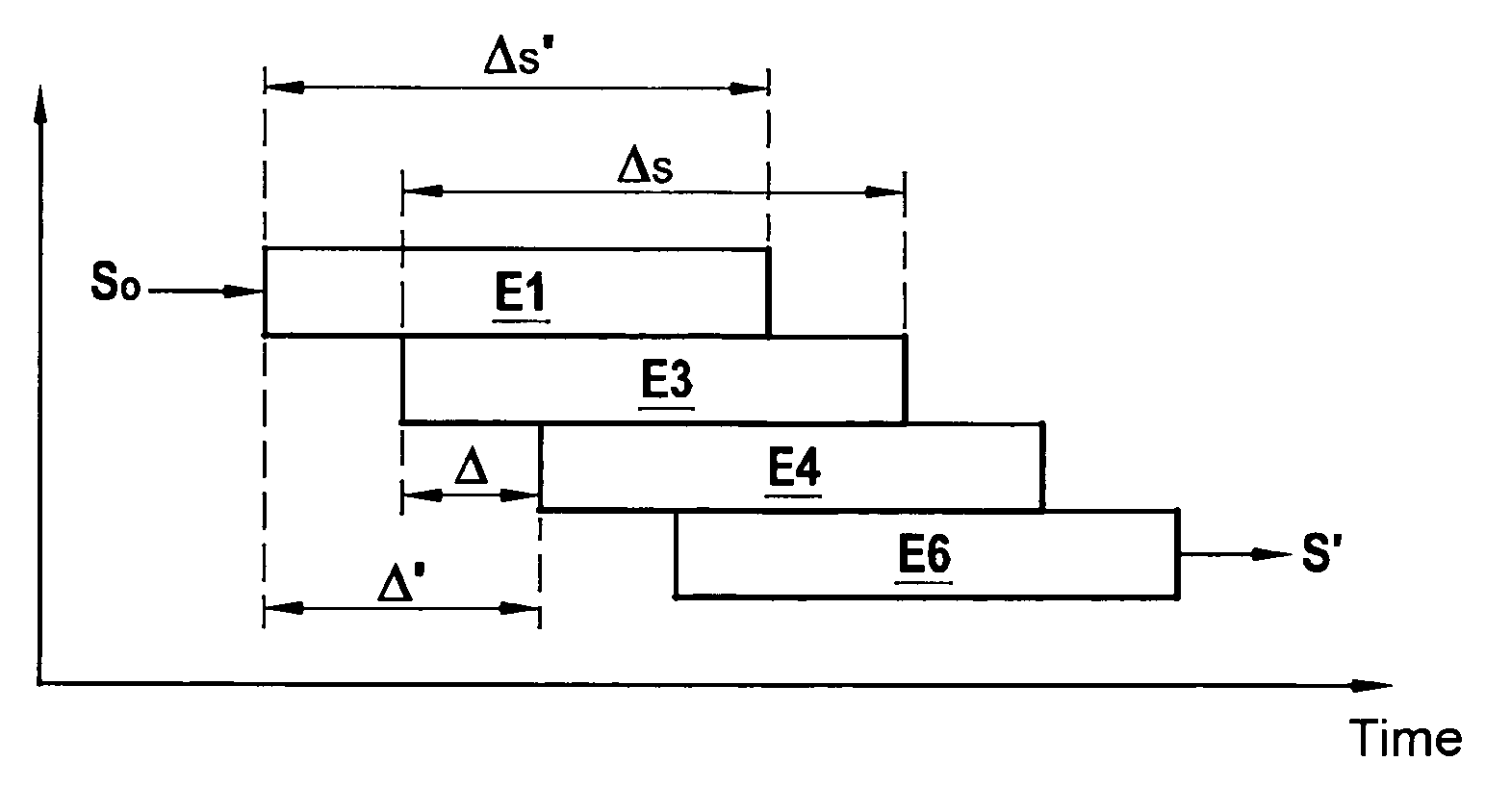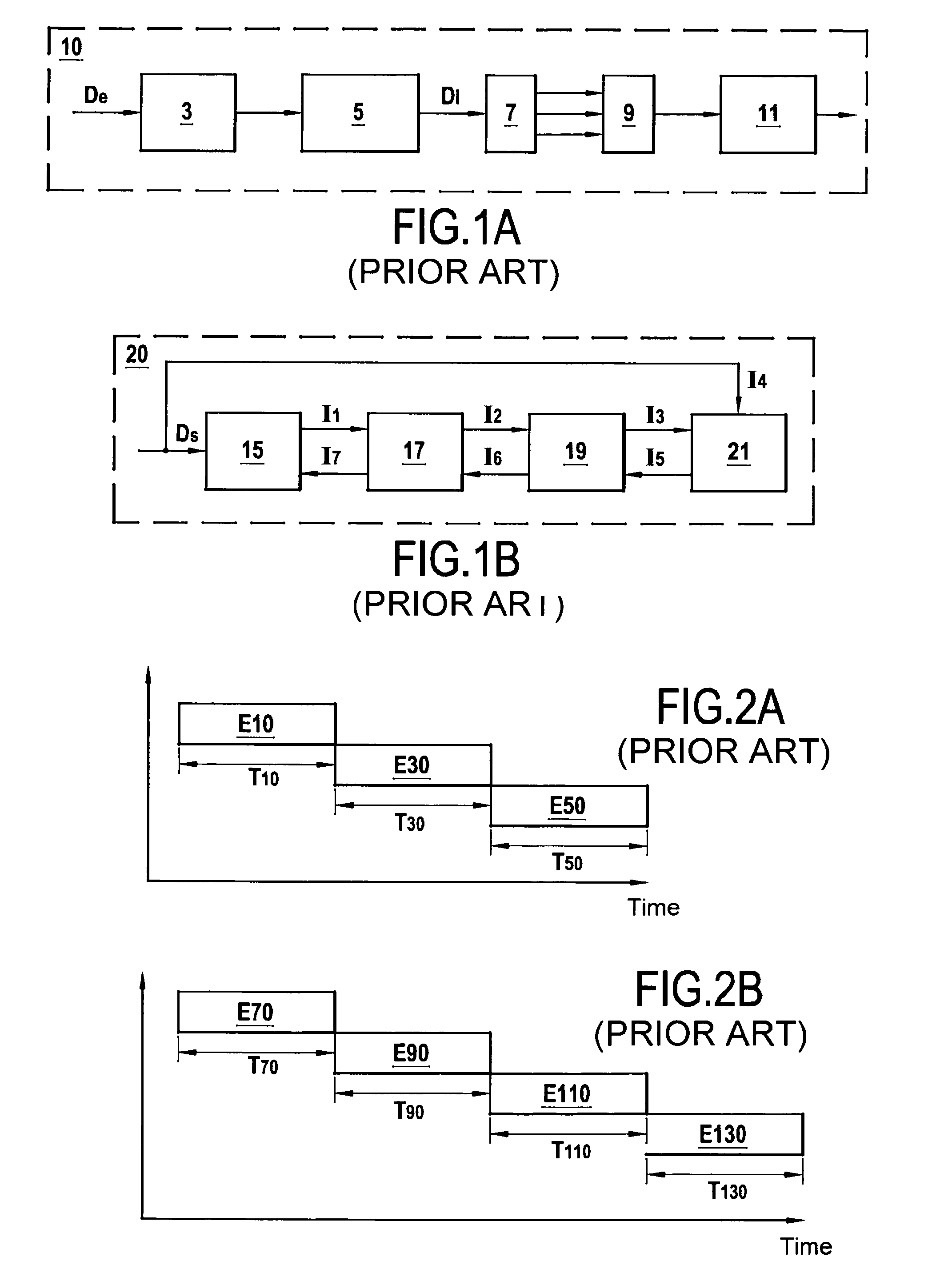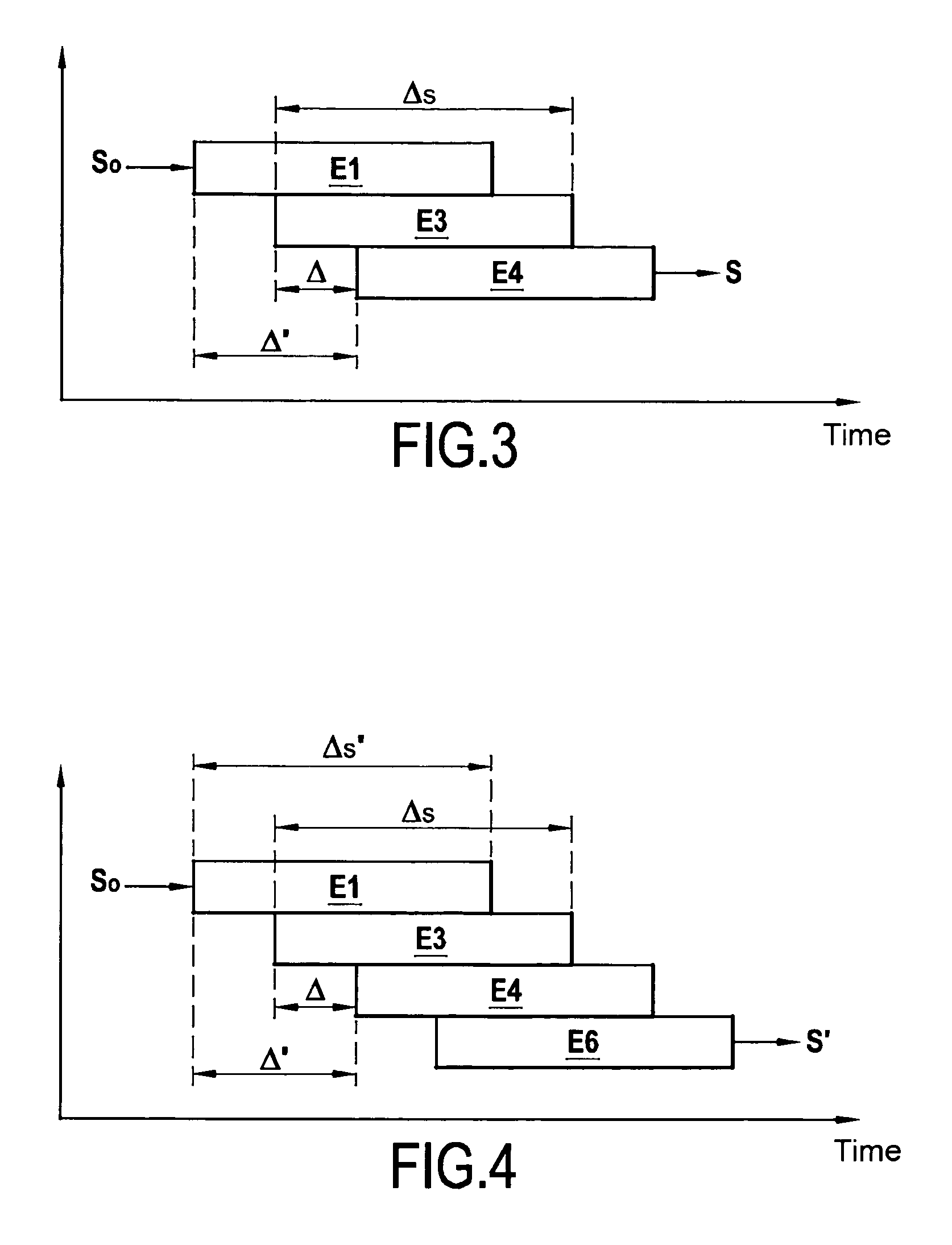Fast encoding and decoding methods and related devices
a coding and decoding technology, applied in the field of digital communication, can solve the problems of limited bit rate of encoding and decoding process, limited encoding (respectively decoding) bit rate, and present transmission errors, and achieve the effect of not affecting performan
- Summary
- Abstract
- Description
- Claims
- Application Information
AI Technical Summary
Benefits of technology
Problems solved by technology
Method used
Image
Examples
Embodiment Construction
[0090]FIG. 3 shows the scheduling in time (abscissa axis) of the steps (ordinate axis) of an encoding method of the invention for encoding an input bit sequence S0 to yield a coded bit sequence S.
[0091]This method includes a first coding step E1 applied to the bits of the input bit sequence S0, using a first code. The bits produced by this first coding step are interleaved by interleaving means 33 (see FIG. 6) during an interleaving step E3.
[0092]The bits coming from the interleaving means 33 are encoded in a second coding step E4 referred to as a parity step using a second code to generate the coded bit sequence S.
[0093]The parity, second coding step E4 advantageously begins after interleaving a predetermined number Δ of bits. This predetermined number Δ of bits is between a first lower number Δi of bits depending on one or more parameters of the interleaving step E3 and a first higher number Δs of bits corresponding to the total number of bits to be processed during the interleavi...
PUM
 Login to View More
Login to View More Abstract
Description
Claims
Application Information
 Login to View More
Login to View More - R&D
- Intellectual Property
- Life Sciences
- Materials
- Tech Scout
- Unparalleled Data Quality
- Higher Quality Content
- 60% Fewer Hallucinations
Browse by: Latest US Patents, China's latest patents, Technical Efficacy Thesaurus, Application Domain, Technology Topic, Popular Technical Reports.
© 2025 PatSnap. All rights reserved.Legal|Privacy policy|Modern Slavery Act Transparency Statement|Sitemap|About US| Contact US: help@patsnap.com



